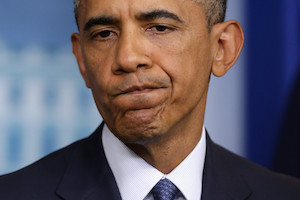President Obama unveiled a proposal on Jan. 8 that would allow American students to attend community college for free. The goal of the proposal is to ease the hurdles of attending college for students to increase graduation rates. This plan, expected to be labeled as the “American College Promise,” could have many benefits, but the high cost—to all colleges and universities, as well as to taxpayers—will likely prevent it from having any success in Congress.
The plan has great potential to benefit American students. While the plan would only cover tuition, the message that college can be affordable could make waves. Robert Kelchen, writing for Washington Monthly, explained the possible effects of this plan in a Jan. 8 article.
“This sends a clear message that community college is an affordable option for all students,” said Kelchen, “Telling students early on that tuition will be free may induce more to prepare for college and eventually enroll.”
In addition, the lowered cost can be enough to get students already in community colleges through to graduation.
“Students, many of them struggling academically to begin with, typically try to make up the shortfall by working long hours,” said the editorial board of the New York Times in a Jan. 15 op-ed, “Their studies suffer, and they often drop out.”
The article also highlighted that the programs which provide money for books, tutoring, transportation and other costs have dramatically increased graduation rates in community colleges.
At the City University of New York, one of these programs increased the graduation rate to 57 percent within three years, while the average graduation rate in urban community colleges sits at 15 percent.
Increasing demands for an educated workforce, rising costs of tuition and comparable education opportunities in many European countries create a near-necessity for some type of reform. This plan is an appropriate response to the need.
However, as students at a private four-year university, it is important to examine the potential effects to our own education. A large concern is cost. As Anthony Zurcher expressed in a recent BBC article, an increase in demand for college may increase tuition across the board.
Notably, there are no details yet of how to fund this plan, which leaves the possibility that federal funding for four-year universities may decrease to compensate for community college funding.
Both of these possibilities signal that expensive four-year private universities may become even more costly to students. As a result, attendance may decrease at DU and similar universities long-term, unless the plan does not affect current higher-education federal funding.
Nonetheless, this proposal should not be of great concern to DU students as it is unlikely it will go into effect. A Jan. 9 Bloomberg article revealed that the plan would cost $60 billion over 10 years. A Republican-controlled Congress unlikely to favor such a costly plan, combined with the fact that many states already struggle to support their higher-education system, suggest that this plan will not have success in Congress.
There are a few options that could make the proposal feasible—notably, the funding could not be diverted from other higher-education funding. While the effects would still be beneficial, it could have the potential to decrease other beneficial aspects of higher-education support, such as the need for students with a four-year education.
The high cost of the proposal makes it hard to swallow in this political environment. An alternative could be to encourage state-by-state initiatives to support programs such as the one offered at City University of New York. This could reduce overall cost while targeting students who most need the support—urban community college students.
Obama’s proposal has many great possibilities for improvement in higher-education, but it is unlikely to succeed in its current state. A few adjustments, however, and this form of higher-education reform could improve our nation’s educational and economic standing.











